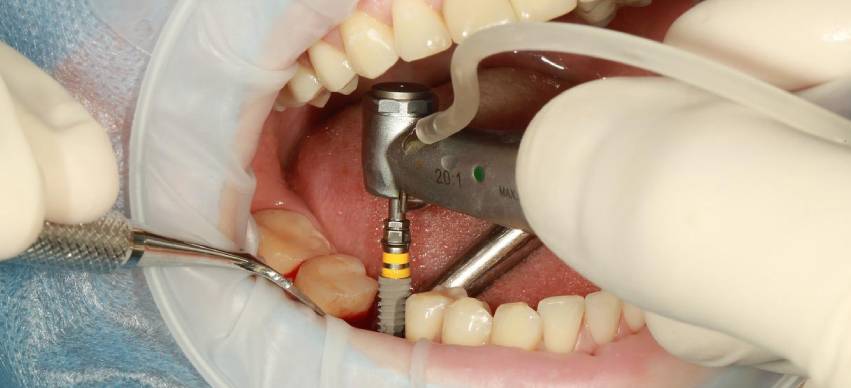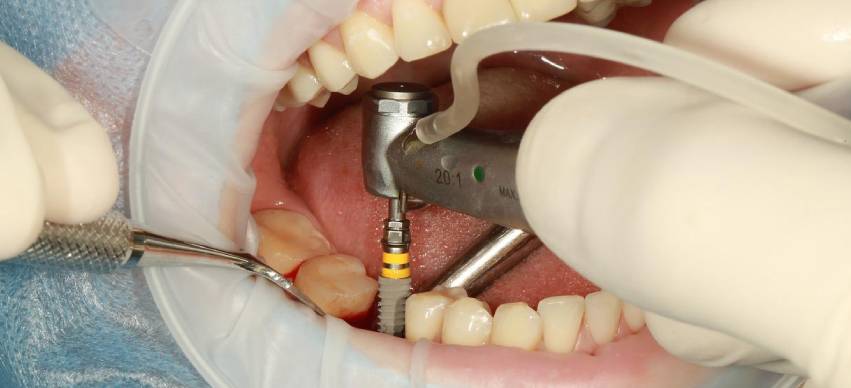Nanoparticle Therapy – An Emerging Cancer Treatment
5 Min Read


Your facial symmetry is affected by many factors, but one of the most overlooked factors is the dental formula. Missing teeth affects the way our faces look and maybe it is time to think about dental implants not only to fix your facial symmetry but also to help you chew food comfortably and to smile more openly. Dental implants help to connect prosthetic teeth directly to the jawbone, thereby replacing any lost teeth. The implant is held in place by the bone that forms around it over the course of many months.
There are largely two types of dental implants and these are endosteal (in the bone) and Subperiosteal (on the bone). The endosteal implant is the most common dental implant and it is done by installing small crews made of titanium onto the jawbone. Titanium is used because it is biocompatible and doesn’t degrade over time. In order to have an endosteal implant, your gums must be sliced apart to expose the jawbone beneath. Drilling holes deep into the bone will allow the implant to be implanted. It's possible to have a temporary, removable denture put in place while you wait for a permanent replacement tooth.
In the event the jawbone is degraded, then the subperiosteal is the best option. The jawbone is not drilled and instead the dental implant is simply placed above the jawbone and fixed with glue. Swelling and pain are to be expected following any implant procedure, regardless of the kind you choose. It might take a few days to become better. After a dental implant is implanted, most patients are able to resume their normal routine the next day.
Dental implant operations take anywhere from three to nine months to complete. Before your treatment is complete, you may need to see a variety of dental experts, such as a periodontist or oral surgeon.
Your teeth, gums, and jawbone will be examined as the initial stage in your treatment plan. Finding out whether or not you have enough healthy jawbones to support the implant is a crucial component of this first examination.
Before commencing the dental implant process, a bone transplant or other operation may be recommended if your jawbone is too thin or fragile. Your gums must be disease-free as well.
When a tooth is missing, dental implants can be used to replace it. The type and extent of the surgery you may expect will be determined by the number of teeth you desire to replace.
Dental implant surgery is normally performed as an outpatient. A local anesthetic, intravenous sedation, or general anesthetics are all options. Prior to the procedure, your doctor will tell you what kind of an aesthetic you'll require.
For up to six months after the dental implant is inserted, new bone development will begin to form around the screw. Osteo-integration, which translates to "combining with the bone," is the term for this process.
As the natural bone around the dental implant strengthens and grows, the dental implant will become a part of the patient's mouth. In this way, it can serve as the prosthetic tooth's root and remain securely in place throughout use.
An abutment, a metal piece that serves as an extension of the implant, is commonly used. A local anesthetic may be used for this technique during the original operation or for a subsequent minor procedure. The new tooth is attached to the implant using an abutment.
If gum tissue has grown over the implant and an abutment is being inserted, the surgeon may have to create an incision. Implants are capped after they've been implanted with a healing cap. However, this is also utilized to prevent tissue from developing over the implant.
An anatomical abutment will be fitted onto the implant during the second surgery. The abutment will then be shaped by the gum tissue. After the abutment is placed, the gums will require several weeks to recover.
Dental surgery and dental procedures are among the most expensive procedures in the united States. They are not covered by the publicly funded insurance programs such as Medicare or Medicaid and therefore are only available on private insurance policies. However, dental implants last longer than bridges or dentures and that’s why their costs are slightly higher. The costs range from $2000 to $3000 on average. This price only covers the implant itself, not the abutment or crown that would go with it. An abutment and crown might cost up to $6,000 per tooth, depending on the complexity of the case.
Prior to initiating treatment, your dentist or dental expert should provide you with an estimate or a precise estimate of the cost. To make things a little simpler, several dentist practices provide payment options.
Getting several teeth replaced may be prohibitively expensive with dental implants, which aren't the best option for everyone. In certain cases, you may not be able to go through with this treatment because of problems. Additionally, you may be looking for something less intrusive.
When it comes to the appearance of the face, dental bridges aim to make people's smiles whole again. Dental bridges restore one's self-esteem and boost one's self-esteem by masking the look difference caused by lost teeth.
A conventional bridge surgery may be completed in two to three dental sessions, making this process more efficient and manageable for the patient. Lightweight and unaffected by changes to the mouth's makeup, these bridges are a great alternative to dentures.
By guaranteeing that existing teeth do not chip or deteriorate due to particular meals, dental bridges help protect the existing teeth from future harm. In addition, they protect teeth from shifting out of place in the mouth. Chewing and speaking are also enhanced since the pressures in the mouth are distributed more evenly with these bridges.
In individuals with other health issues, dental bridges might be a welcome alternative to more invasive procedures like root canals and crowns. Due to the risk of rejection, patients who have undergone significant graft surgeries are more likely to seek bridges as an alternative to implants.